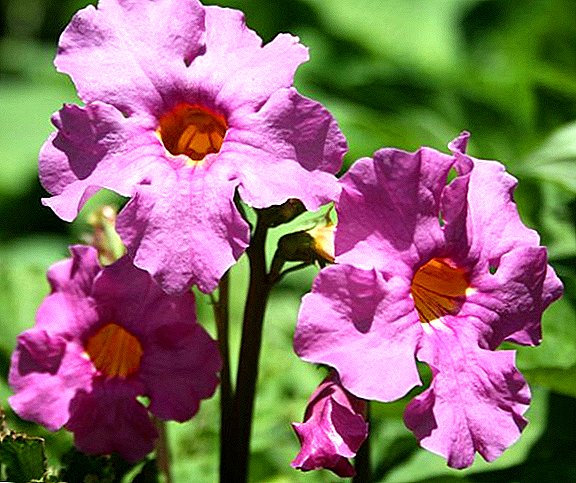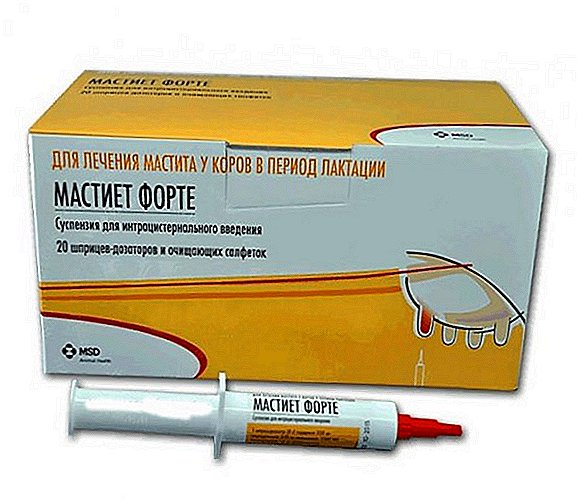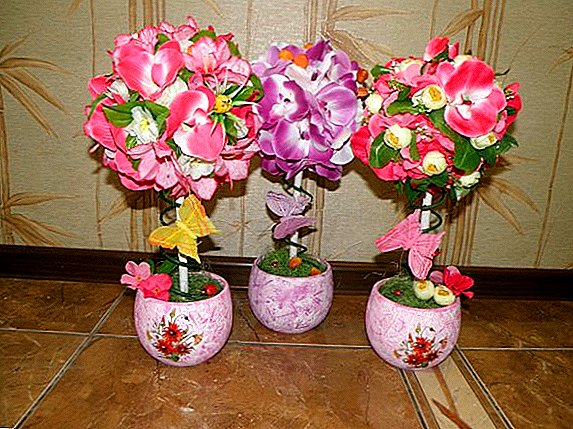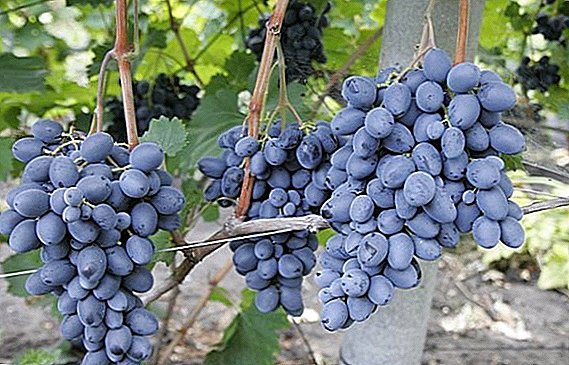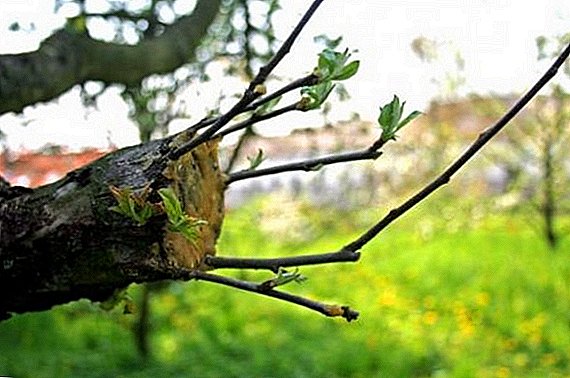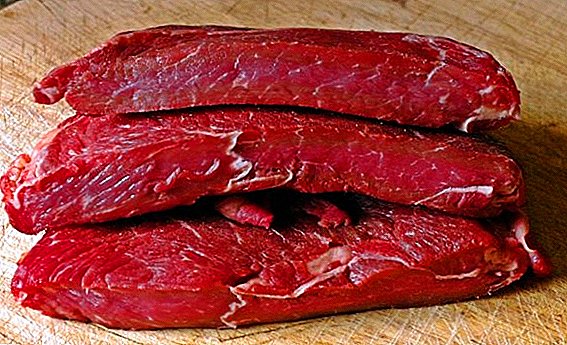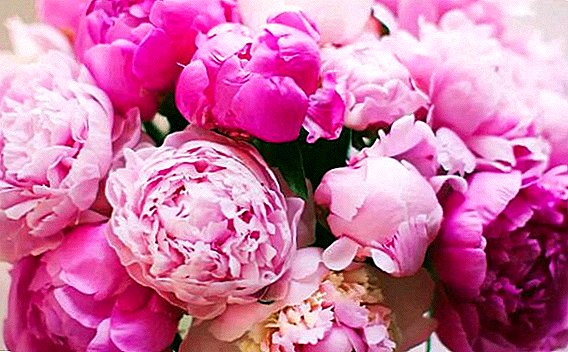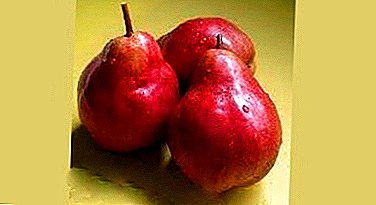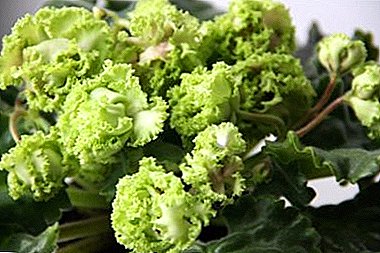
For many years all over the world people are engaged in floriculture. Flowers are blooming in the rooms, in the gardens and on the streets.
Over the entire history of this trend, a large number of plant varieties have been researched and developed. They are used for decorative purposes, as well as medicines and spices.
There are types of flowers that are undemanding to care, and among them are violets. All kinds of violets are striking in their beauty, but today we will talk about the amazing variety of violet "The Bronze Horseman".
Characteristic variety
From the whole variety of varieties of violets can be distinguished "The Bronze Horseman". It has a long, beautiful flowering. The care is simple, so even a beginner can handle it. Large and lush flowers. The edges of the petals have a wavy appearance. Flowering lasts 10 months. Buds during flowering large. Their number is small, but this is offset by their size. Leaves visible green wavy edging.
History of origin
The breeder was faced with the task of obtaining unusual flowers that would be combined with a shade of leaves. Homeland of all violets is the East African province. In honor of the governor of this province is another name for violets - "Saintpaulia".
Information about other violets bred by E. Lebetskaya, their description and photos can be found in a separate article.
Appearance Description
 The plant during its development forms several rows of leaves.. The edges often hang, the bush does not hold a presentable form.
The plant during its development forms several rows of leaves.. The edges often hang, the bush does not hold a presentable form.
Sheet plate has a rounded shape with wavy edges. On the surface of a small pile. Young shoots of light green color. Old leaves get a dark green hue. The color of the leaves of one tone. When forming the rosette all the leaves will be the same color.
3-5 buds are formed on one brush. They all bloom the same size. The wax surface of the petals has a pink or white color. The edges are uneven, lacy, velvety, light green or bright green. On the border of pink and green one can see a copper shade, due to which this sort of violet got its name. Inside the flower are 2 stamens, 2 carpels and 1 pistil in the ovary.
Stems tight and fleshy, fragile. In the center, the sockets are directed upwards; in rows, they diverge on the sides. You need to be careful when transplanting, the stems can be easily broken..
The root system is weak and small. She needs loose soil, moisture and air. When transplanting the roots are treated very carefully (can be placed in a bag or container).
Seeds are born in small boxes. It is necessary to observe special conditions for their ripening. To achieve this is not easy, only an experienced grower can do it.
Care features
This plant for good growth needs a warm and wet room. The temperature should be kept at 15 - 22 degrees of heat. At temperatures above or below this indicator, diseases appear.
When grown on a window in the summer, the flowerpot is moved to the edge of the window sill to avoid direct sunlight, while in winter the plant is moved from the heat source closer to the sun. Drafts this type of Saintpaulia can not stand.
 Grow the "Bronze Horseman" on the north, west and east windows. On the south side, they do not set up so that the plant "does not burn". Necessary diffused lighting. For winter, the plant should be provided with artificial light from fluorescent lamps. Otherwise, the buds will become dim, and the leaves - faded.
Grow the "Bronze Horseman" on the north, west and east windows. On the south side, they do not set up so that the plant "does not burn". Necessary diffused lighting. For winter, the plant should be provided with artificial light from fluorescent lamps. Otherwise, the buds will become dim, and the leaves - faded.
Permissible moisture for the flower - 50%. It can not be sprayed due to the development of pathogenic microflora. It should be placed near the tank with water. Watering should be regular and abundant.
Moisturize the soil on the same day with the same amount of water. In winter, watering is done once a week, in summer - 2 times.
Excess moisture is killed from the pallet. Wicked watering is used for this type of violet.. In this case, the plant itself receives the amount of moisture that it needs.
By feeding, this type of Saintpaulia is not very demanding. Violet enough of what is in the universal soil. When flowering make mineral complex compounds. They are sold in flower shops. When preparing a solution, a dosage of 2 times less than that indicated in the instructions is needed. Fertilizers are applied every 2 to 3 weeks.
Planting and growing rules
The soil for this flower should be loose and with the addition of perlite and vermiculite.
This substrate can be purchased in finished form or cook yourself. This requires leaf, turf ground and peat in proportions of 3: 2: 1. Drainage at the bottom of the pot should contain gravel and broken ceramics.
For the Copper Horse violet, shallow containers are suitable. Diy-shaped pots are better than rectangular ones.
 The diameter of the tank should be 10 - 15 cm and no more. It is necessary for the proper development of the root system, while the plant will actively develop the buds and leaves. The best pots for this Saintpaulia are made from natural materials. (clay, ceramics, extruded wood).
The diameter of the tank should be 10 - 15 cm and no more. It is necessary for the proper development of the root system, while the plant will actively develop the buds and leaves. The best pots for this Saintpaulia are made from natural materials. (clay, ceramics, extruded wood).
This violet does not need to be transplanted due to a weak root system. For her, reloading every six months is more suitable. When transferring to the root ball, sprinkle the substrate, lightly sprinkling it with water.
For reproduction using leaf cuttings, so you can get high germination. Seed breeding method using only experienced growerssince it is a laborious process. But this is how outstanding results are obtained, because so many varieties of violets were bred.
Possible diseases
Among the most common late blight, gray and brown rot, root rot. The development of diseases occurs due to non-compliance with the rules of agrotechnology (waterlogging, too cold water, low temperature, and high humidity).
For the treatment using these drugs:
- Maxi.
- Aktara.
- Prov-do.
- Actofit.
- Fitoverm.
Pests:
- aphid;
- pincers;
- thrips;
- nematodes.
When they appear, remove all affected parts. With these insects sticky tapes well fight.
Conclusion
Violet "The Bronze Horseman" with its lush flowering fills the room and balconies with the beauty of it. It takes effort and care to extend flowering.. Saintpaulia should be protected from direct sunlight, comply with the temperature and humidity conditions. Need regular watering in quantities that depend on the time of year. During flowering, the plant requires additional minerals.


